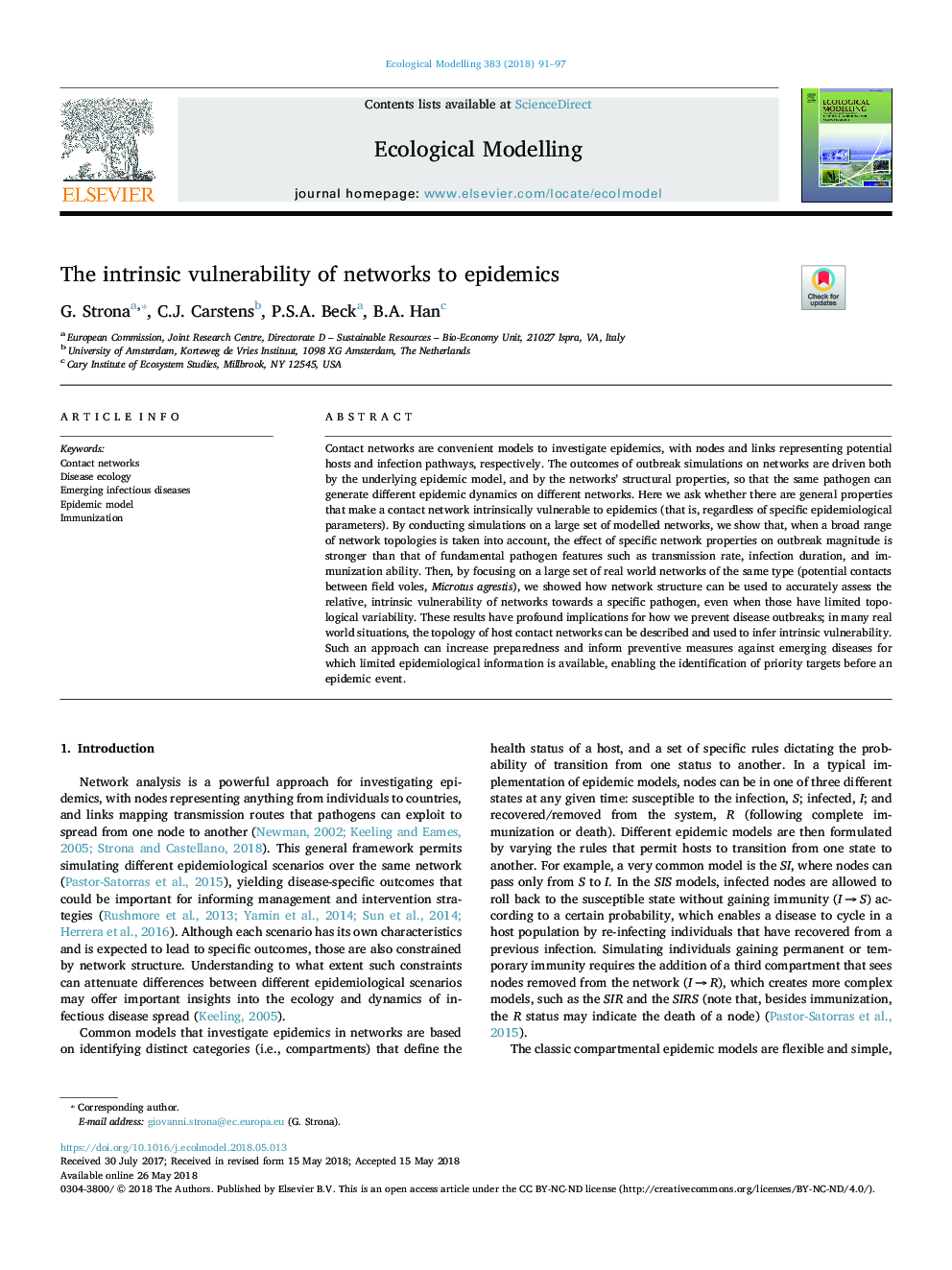| Article ID | Journal | Published Year | Pages | File Type |
|---|---|---|---|---|
| 8846003 | Ecological Modelling | 2018 | 7 Pages |
Abstract
Contact networks are convenient models to investigate epidemics, with nodes and links representing potential hosts and infection pathways, respectively. The outcomes of outbreak simulations on networks are driven both by the underlying epidemic model, and by the networks' structural properties, so that the same pathogen can generate different epidemic dynamics on different networks. Here we ask whether there are general properties that make a contact network intrinsically vulnerable to epidemics (that is, regardless of specific epidemiological parameters). By conducting simulations on a large set of modelled networks, we show that, when a broad range of network topologies is taken into account, the effect of specific network properties on outbreak magnitude is stronger than that of fundamental pathogen features such as transmission rate, infection duration, and immunization ability. Then, by focusing on a large set of real world networks of the same type (potential contacts between field voles, Microtus agrestis), we showed how network structure can be used to accurately assess the relative, intrinsic vulnerability of networks towards a specific pathogen, even when those have limited topological variability. These results have profound implications for how we prevent disease outbreaks; in many real world situations, the topology of host contact networks can be described and used to infer intrinsic vulnerability. Such an approach can increase preparedness and inform preventive measures against emerging diseases for which limited epidemiological information is available, enabling the identification of priority targets before an epidemic event.
Related Topics
Life Sciences
Agricultural and Biological Sciences
Ecology, Evolution, Behavior and Systematics
Authors
G. Strona, C.J. Carstens, P.S.A. Beck, B.A. Han,
